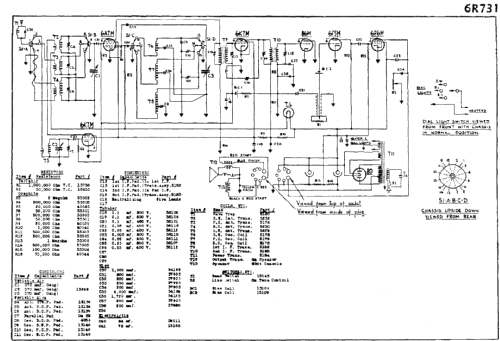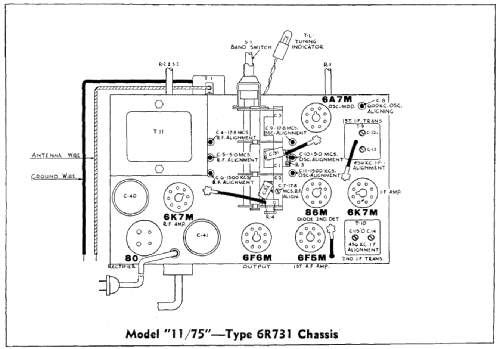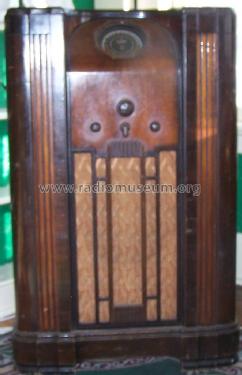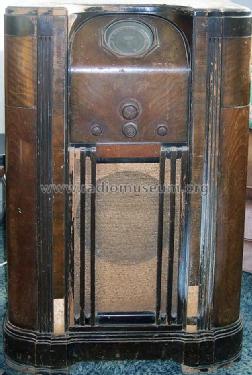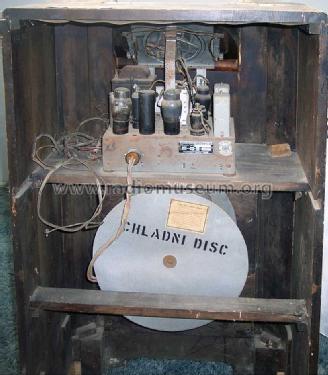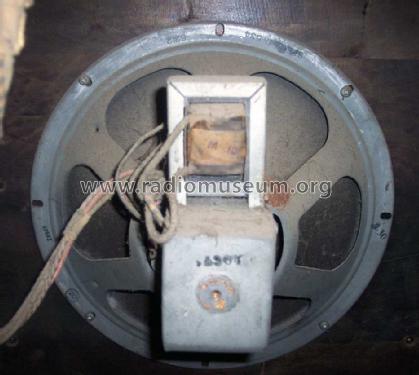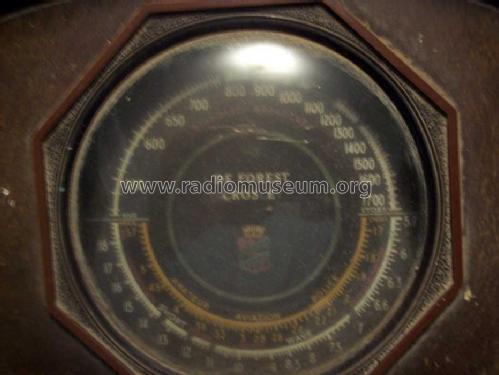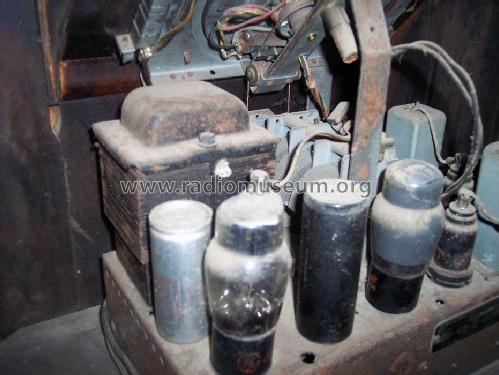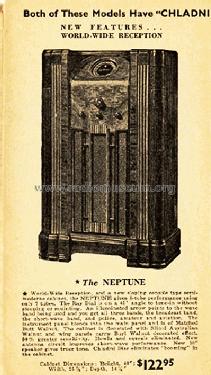Neptune Ch= 6D731 (with Chladni Disc)
De Forest (DeForest) Crosley Radio, Consolidated Industries; Toronto
- Country
- Canada
- Manufacturer / Brand
- De Forest (DeForest) Crosley Radio, Consolidated Industries; Toronto
- Year
- 1936/1937

- Category
- Broadcast Receiver - or past WW2 Tuner
- Radiomuseum.org ID
- 158526
Click on the schematic thumbnail to request the schematic as a free document.
- Number of Tubes
- 7
- Main principle
- Superhet with RF-stage; ZF/IF 456 kHz; 2 AF stage(s)
- Tuned circuits
- 7 AM circuit(s)
- Wave bands
- Broadcast and Short Wave (SW).
- Power type and voltage
- Alternating Current supply (AC)
- Loudspeaker
- Electro Magnetic Dynamic LS (moving-coil with field excitation coil)
- Material
- Wooden case
- from Radiomuseum.org
- Model: Neptune Ch= 6D731 - De Forest DeForest Crosley
- Shape
- Console with any shape - in general
- Dimensions (WHD)
- 24 x 40 x 14 inch / 610 x 1016 x 356 mm
- Notes
-
The DeForest Crosley console radio model Neptune wich chassis 6D731 and Lyra 6D932 show a "Chladni Disc for absorbing cabinet booming" (Chladni plate). This is a gadget for visualization of vibration patterns, by spreading a uniform layer of sand on a disk, and observing displacement when vibration is applied. It can be done with a loudspeaker. From Wikipedia (Feb 2012): "Ernest Florens Friedrich Chladni, born 1756 in Wittenberg (died 1837 in Breslau) was a Slowaky physicist, musician and astronome, living in Germany. One of Chladni's best-known achievements was inventing a technique to show the various modes of vibration on a mechanical surface. Chladni repeated the pioneering experiments of Robert Hooke of Oxford University who, on July 8, 1680, had observed the nodal patterns associated with the vibrations of glass plates. Hooke ran a bow along the edge of a plate covered with flour, and saw the nodal patterns emerge. Chladni's technique, first published in 1787 in his book, Entdeckungen über die Theorie des Klanges ("Discoveries in the Theory of Sound"), consisted of drawing a bow over a piece of metal whose surface was lightly covered with sand. The plate was bowed until it reached resonance and the sand formed a pattern showing the nodal regions. Since the 20th century it has become more common to place a loudspeaker driven by an electronic signal generator over or under the plate to achieve a more accurate adjustable frequency. Variations of this technique are commonly used in the design and construction of acoustic instruments such as violins, guitars, and cellos." There is a folder "Nuveaux Modèles de Luxe 1937" with le Neptune, le Lyre, le Comète, le Jupiter, l'Étoile Royale with door, which means season 1936/37.
- Price in first year of sale
- 122.95 $
- Circuit diagram reference
- Radio College of Canada
- Mentioned in
- RCC Rogers-Majestic section page 19
- Author
- Model page created by Robin Roeckers. See "Data change" for further contributors.
- Other Models
-
Here you find 272 models, 131 with images and 183 with schematics for wireless sets etc. In French: TSF for Télégraphie sans fil.
All listed radios etc. from De Forest (DeForest) Crosley Radio, Consolidated Industries; Toronto
